Abstract
Both water activity (aW) and temperature affected the production of altenuene (AE), alternariol (AOH), and alternariol monomethyl ether (AME) by Alternaria alternata on wheat extract agar and wheat grain. Greatest production of all three mycotoxins occurred at 0.98 aW and 25 degrees C on both substrates. At 0.98 aW and 25 degrees C, a single colony of A. alternata grown on wheat extract agar produced 807 micrograms of AOH, 603 micrograms of AME, and 169 micrograms of AE ml in 30 days. However, production of all three mycotoxins at 0.95 aW was less than 40% of these amounts. Little toxin was produced at 0.90 aW. Changing temperature and aW altered the relative amounts of the different toxins produced on agar. At 15 degrees C and 0.98 aW, maxima of 52 micrograms of AOH and 25 micrograms of AME per ml were produced after 15 and 30 days, respectively, whereas AE continued to increase and reached 57 micrograms/ml after 40 days. At 15 degrees C and 0.95 aW, production was, respectively, 62, 10, and 5 micrograms/ml after 40 days. All three metabolites were produced at 5 degrees C and 0.98 to 0.95 aW and at 30 degrees C and 0.98 to 0.90 aW. On wheat grain at 25 degrees C and 0.98 to 0.95 aW, more AME was produced than AOH or AE, but at 15 degrees C there was less AME than AOH or AE. Only trace amounts of AE, AOH, and AME were found at 15 to 25 degrees C and 0.90 aW, but production of AME was inhibited at 30 degrees C and 0.95 aW or less.
Full text
PDF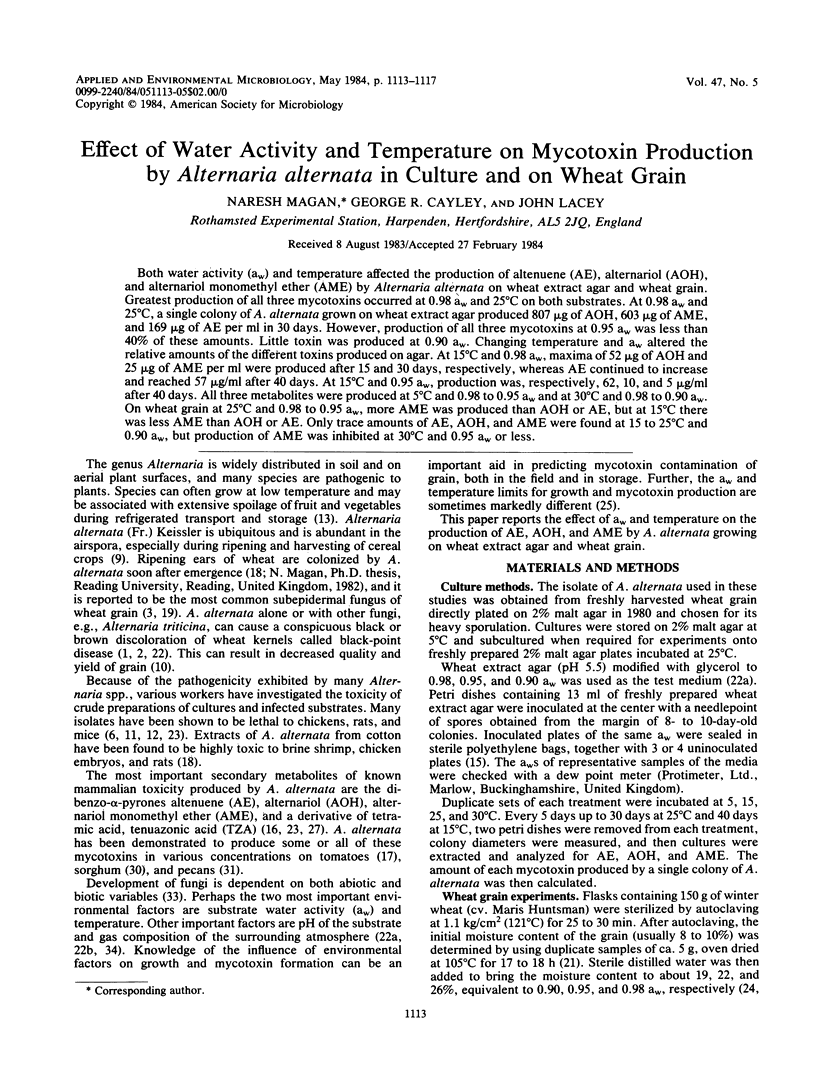
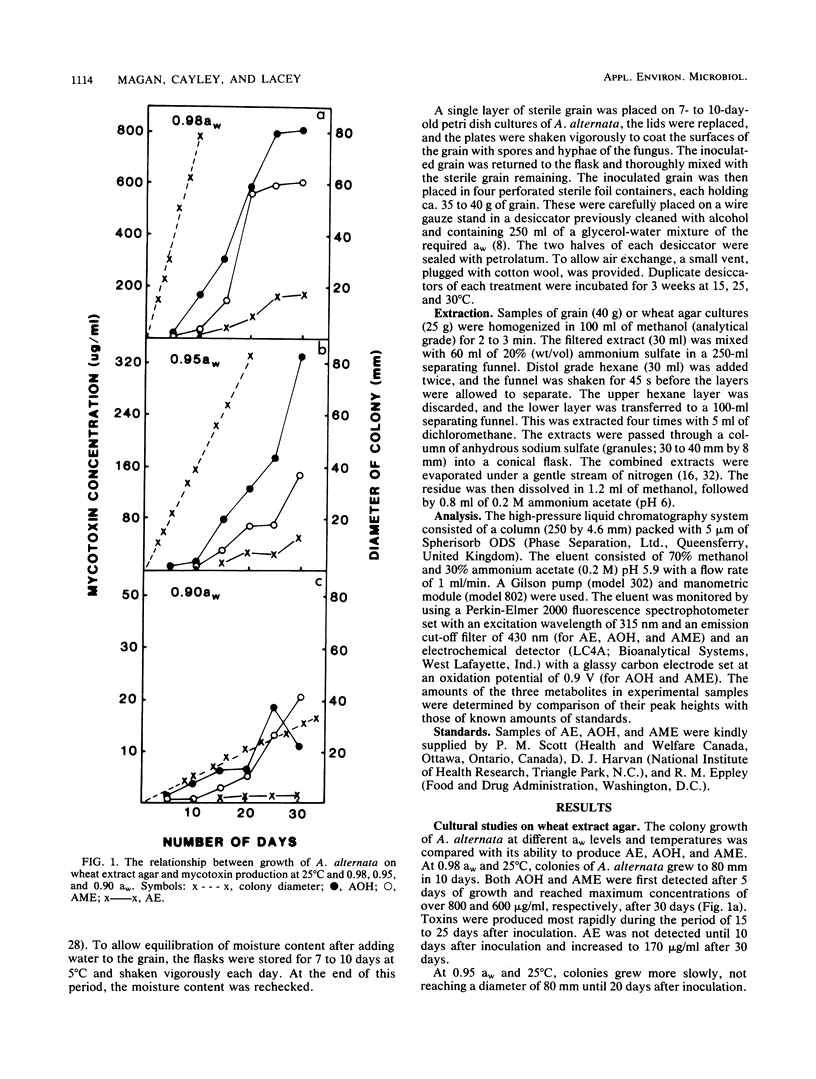
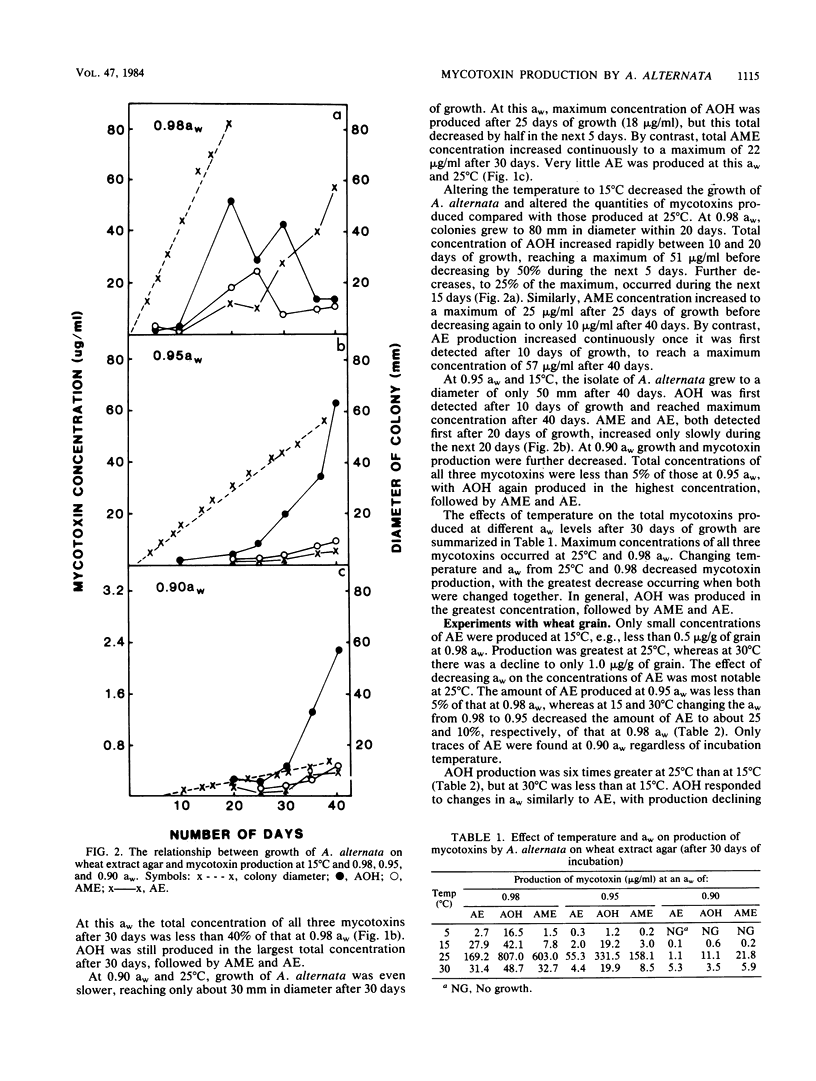
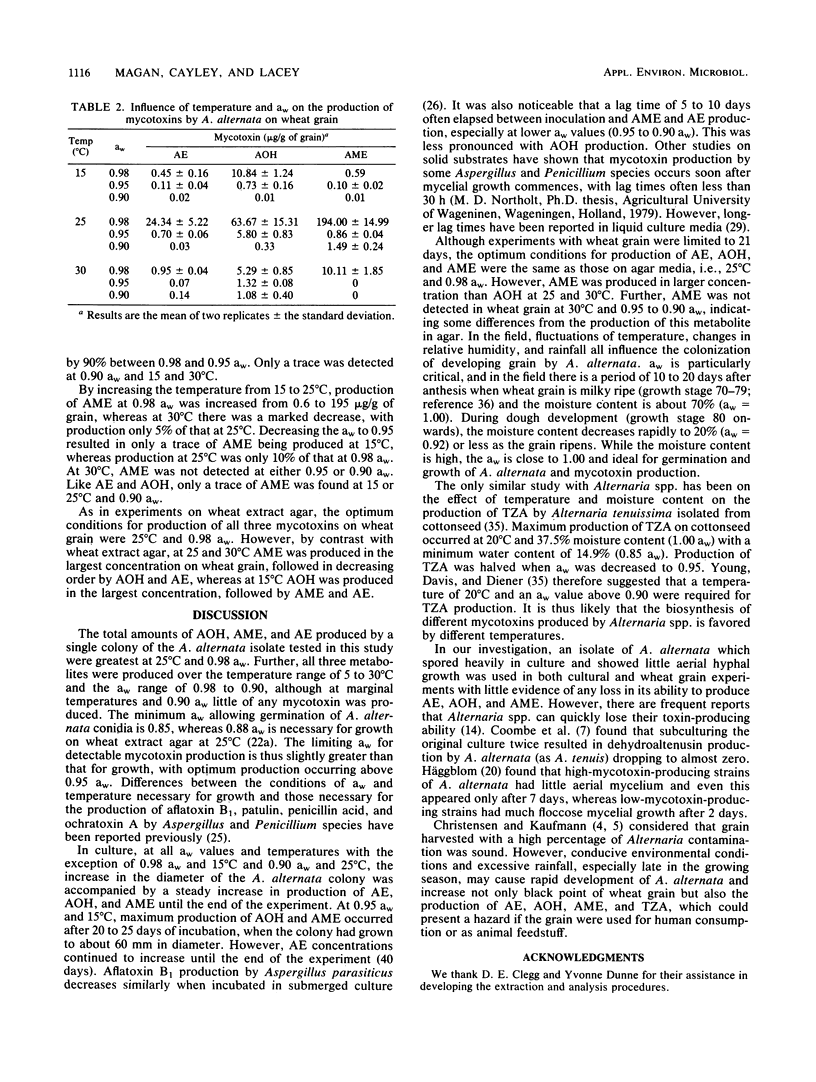
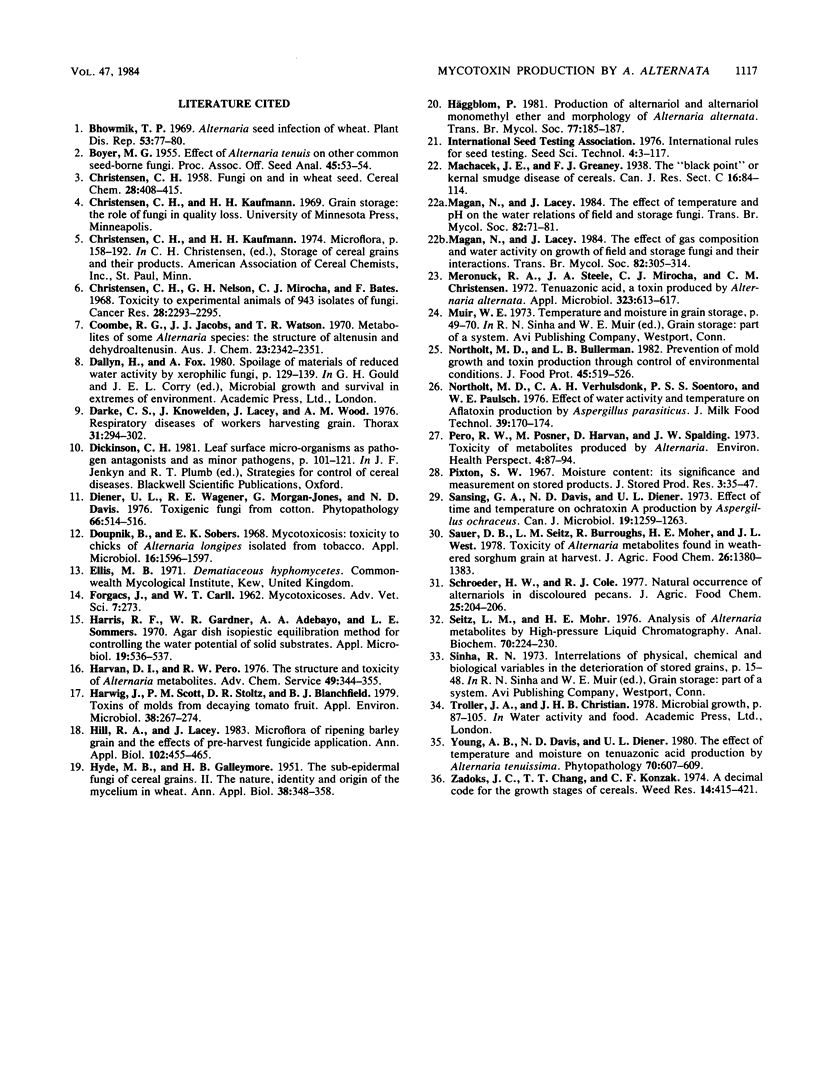
Selected References
These references are in PubMed. This may not be the complete list of references from this article.
- Christensen C. M., Nelson G. H., Mirocha C. J., Bates F. Toxicity to experimental animals of 943 isolates of fungi. Cancer Res. 1968 Nov;28(11):2293–2295. [PubMed] [Google Scholar]
- Darke C. S., Knowelden J., Lacey J., Milford Ward A. Respiratory disease of workers harvesting grain. Thorax. 1976 Jun;31(3):294–302. doi: 10.1136/thx.31.3.294. [DOI] [PMC free article] [PubMed] [Google Scholar]
- Doupnik B., Jr, Sobers E. K. Mycotoxicosis: toxicity to chicks of Alternaria longipes isolated from tobacco. Appl Microbiol. 1968 Oct;16(10):1596–1597. doi: 10.1128/am.16.10.1596-1597.1968. [DOI] [PMC free article] [PubMed] [Google Scholar]
- Harris R. F., Gardner W. R., Adebayo A. A., Sommers L. E. Agar dish isopiestic equilibration method for controlling the water potential of solid substrates. Appl Microbiol. 1970 Mar;19(3):536–537. doi: 10.1128/am.19.3.536-537.1970. [DOI] [PMC free article] [PubMed] [Google Scholar]
- Harwig J., Scott P. M., Stoltz D. R., Blanchfield B. J. Toxins of molds from decaying tomato fruit. Appl Environ Microbiol. 1979 Aug;38(2):267–274. doi: 10.1128/aem.38.2.267-274.1979. [DOI] [PMC free article] [PubMed] [Google Scholar]
- Meronuck R. A., Steele J. A., Mirocha C. J., Christensen C. M. Tenuazonic acid, a toxic produced by Alternaria alternata. Appl Microbiol. 1972 Mar;23(3):613–617. doi: 10.1128/am.23.3.613-617.1972. [DOI] [PMC free article] [PubMed] [Google Scholar]
- Pero R. W., Posner H., Blois M., Harvan D., Spalding J. W. Toxicity of metabolites produced by the "Alternaria". Environ Health Perspect. 1973 Jun;4:87–94. doi: 10.1289/ehp.730487. [DOI] [PMC free article] [PubMed] [Google Scholar]
- Sansing G. A., Davis N. D., Diener U. L. Effect of time and temperature on ochratoxin A production by Aspergillus ochraceus. Can J Microbiol. 1973 Oct;19(10):1259–1263. doi: 10.1139/m73-203. [DOI] [PubMed] [Google Scholar]
- Sauer D. B., Seitz L. M., Burroughs R., Mohr H. E., West J. L., Milleret R. J., Anthony H. D. Toxicity of Alternaria metabolites found in weathered sorghum grain at harvest. J Agric Food Chem. 1978 Nov-Dec;26(6):1380–1393. doi: 10.1021/jf60220a022. [DOI] [PubMed] [Google Scholar]
- Schroeder H. W., Cole R. J. Natural occurrence of alternariols in discolored pecans. J Agric Food Chem. 1976 Jan-Feb;25(1):204–206. doi: 10.1021/jf60209a032. [DOI] [PubMed] [Google Scholar]
- Seitz L. M., Mohr H. E. Analysis of Alternaria metabolites by high-pressure liquid chromatography. Anal Biochem. 1976 Jan;70(1):224–230. doi: 10.1016/s0003-2697(76)80062-0. [DOI] [PubMed] [Google Scholar]


